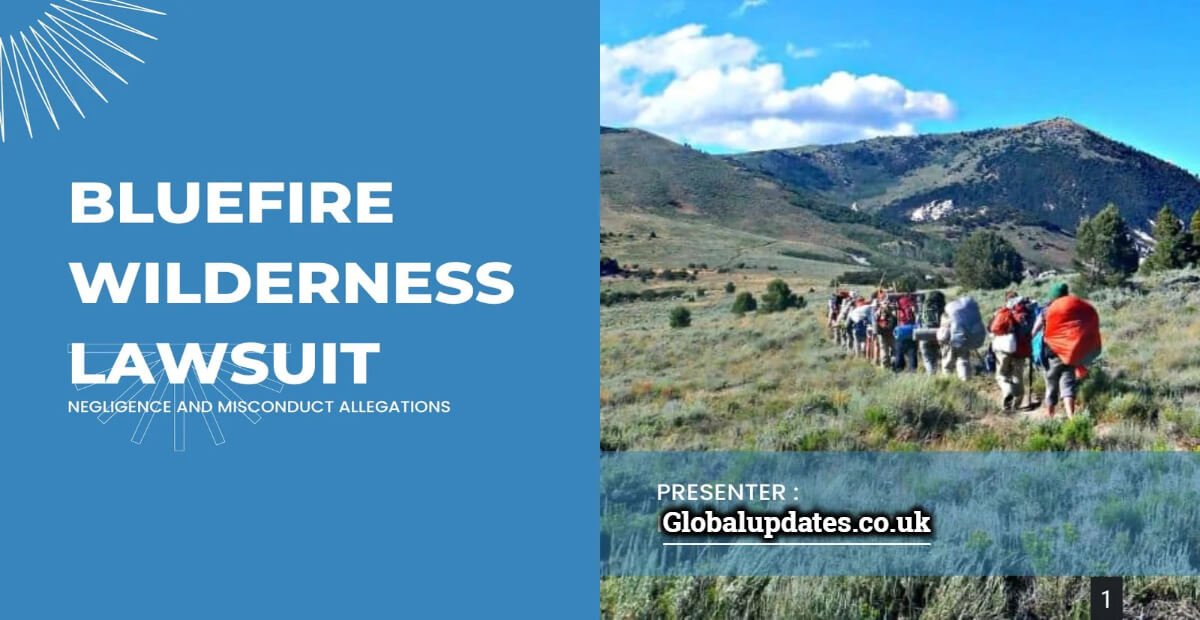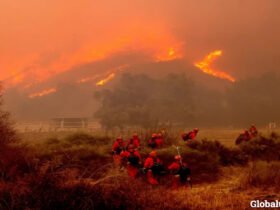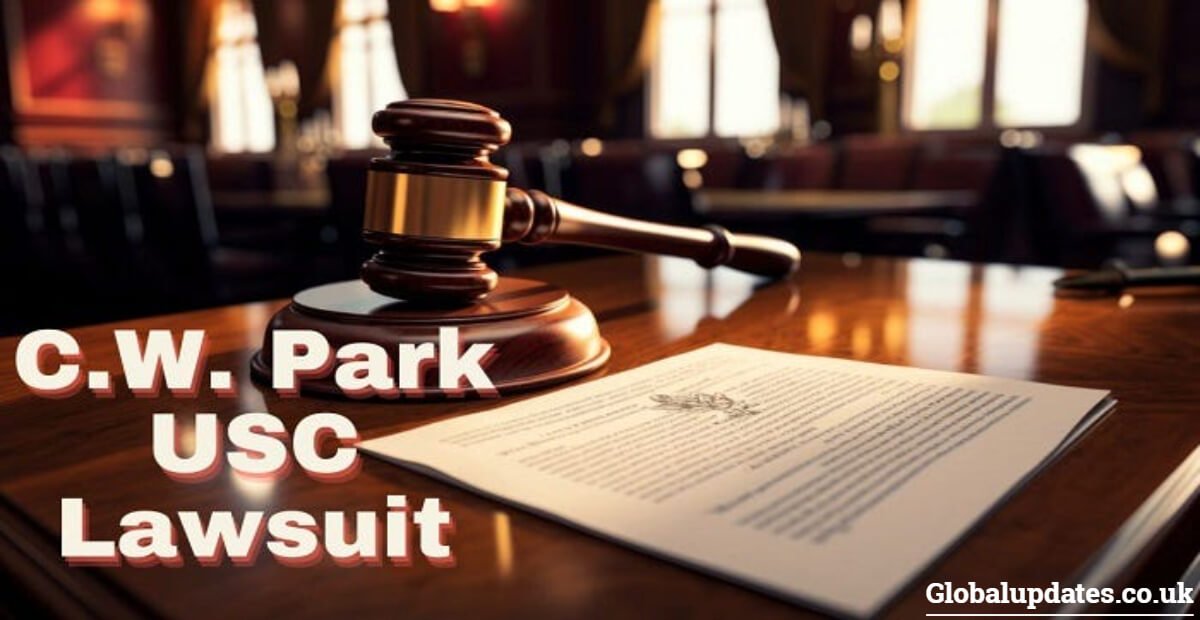The Bluefire Wilderness lawsuit is making waves across the outdoor community and beyond. It’s more than just a legal battle; it represents a clash of values, interests, and visions for our precious natural landscapes. As discussions intensify around conservation efforts and corporate responsibilities, this cBluefire Wilderness Lawsuitase has captured the attention of environmentalists, local communities, and industry leaders alike.
Why should you care? This lawsuit could reshape how businesses operate in wilderness areas and influence future environmental policies. The outcomes might impact not only Bluefire Wilderness but also other companies that rely on similar practices.
This article will dive into the details surrounding the Bluefire Wilderness lawsuit. We’ll explore its background, key players involved, legal arguments presented by both sides, and potential implications moving forward. Stay with us as we unpack what this significant case means for everyone invested in preserving our planet’s beauty.
Background of Bluefire Wilderness
Bluefire Wilderness has carved a niche in the outdoor recreation industry since its inception. Established with a commitment to promoting adventure and sustainability, the company focuses on providing high-quality gear and services that enhance outdoor experiences. Their mission revolves around connecting people with nature while fostering respect for the environment.
Beyond products, Bluefire Wilderness plays an active role in conservation efforts. The brand collaborates with various organizations to restore natural habitats and protect wildlife.
Community involvement is also at the heart of their operations. Through workshops, volunteer events, and educational programs, they engage local populations in preserving natural spaces. This dual focus on environmental stewardship and community support strengthens their reputation as a responsible entity within the outdoor sector.
Overview of the Lawsuit
The Bluefire Wilderness lawsuit centers around allegations that the company violated environmental regulations during its operations. Plaintiffs claim that these actions led to significant ecological damage, threatening local wildlife and disrupting community recreational activities. The core issues involve compliance with environmental standards and potential negligence in maintaining natural habitats.
Key parties in this legal battle include environmental advocacy groups as plaintiffs, pushing for accountability and restoration efforts. On the other side stands Bluefire Wilderness, defending its practices against accusations of wrongdoing.
Stakeholders also encompass local communities who rely on pristine outdoor spaces for recreation and tourism. Their interests lie in ensuring sustainable practices are upheld while balancing economic benefits derived from outdoor activities offered by Bluefire Wilderness.
Must Read:
Causes of the Lawsuit
The Bluefire Wilderness lawsuit is rooted in several legal grounds. Plaintiffs have cited violations of environmental regulations, particularly those concerning land use and conservation standards. Allegations include failure to comply with local zoning laws and detrimental impacts on protected habitats.
Key events unfolded leading up to the case. Community members raised concerns over development activities that allegedly threatened local wildlife and ecosystems. Protests began after reports surfaced about improper waste management practices at Bluefire facilities.
In response to these grievances, formal complaints were filed last year, triggering an investigation by regulatory authorities. The situation escalated when a significant incident occurred—an unauthorized clearing of land that sparked outrage among environmental advocates. This chain of events set the stage for the current legal battle facing Bluefire Wilderness, highlighting ongoing tensions between business operations and community interests.
Key Legal Arguments
The plaintiffs in the Bluefire Wilderness lawsuit assert that the company violated environmental regulations, claiming significant harm to local ecosystems. They present evidence of pollution and habitat destruction linked to Bluefire’s operations. Their desired outcome includes substantial financial penalties and stricter operational guidelines.
On the other hand, Bluefire Wilderness counters these allegations by emphasizing its commitment to sustainability. The defense argues that their practices align with existing laws aimed at protecting natural resources. Furthermore, they provide data showcasing successful conservation efforts undertaken alongside commercial activities.
This clash of perspectives highlights a broader debate about balancing business interests with environmental preservation. Both sides are preparing for a rigorous legal battle as they seek validation for their respective claims and defenses in this high-stakes case.
Timeline of the Lawsuit
The Bluefire Wilderness lawsuit officially began on May 15, 2023. The plaintiffs filed their complaint in the local court, raising several critical issues regarding environmental practices.
Initial proceedings unfolded swiftly as both parties exchanged motions and evidence. Key hearings took place over the summer, with pivotal testimonies shaping arguments from both sides.
By late 2023, a significant ruling favored the plaintiffs on procedural grounds, allowing them to proceed with specific allegations. This decision heightened tensions in the courtroom and among stakeholders involved.
As of early 2024, all eyes are on an upcoming hearing scheduled for March 10. Legal experts anticipate this session could be decisive in moving towards resolution or further entrenching disputes between the parties involved. Interested observers are eager for updates that will emerge following this crucial date.
Potential Implications of the Lawsuit
The Bluefire Wilderness lawsuit carries significant potential implications that could reshape the company’s trajectory. Financially, an adverse ruling might force operational changes and resource reallocations. This scenario could strain budgets and alter their commitment to community initiatives.
For the broader industry, this case may set crucial legal precedents impacting how outdoor companies approach environmental regulations. Similar organizations will likely scrutinize their practices more closely to avoid litigation risks.
On a community level, the outcome could influence ongoing conservation efforts. A ruling favoring environmental protection might inspire stronger policies across various sectors. Conversely, if the case leans toward business interests, it could undermine existing projects aimed at safeguarding local ecosystems and supporting recreational spaces for public use. The ripple effects of this lawsuit are poised to resonate far beyond just one organization or event.
Expert Opinions and Analysis
Legal experts are closely monitoring the Bluefire Wilderness lawsuit. Many attorneys emphasize the complexities involved, particularly regarding environmental regulations. The interpretations of these laws could set significant precedents for future cases.
Environmental specialists highlight concerns about conservation efforts tied to this lawsuit. They believe that a ruling against Bluefire Wilderness might undermine ongoing initiatives aimed at protecting local ecosystems. Their insights focus on how legal outcomes can ripple through community and nature alike.
Industry leaders express mixed feelings about the implications of this case. Some advocate for better practices within outdoor companies, while others worry about potential overreach in regulations affecting businesses like Bluefire Wilderness. Commentary from these figures reveals a strong interest in balancing ecological responsibility with economic viability, urging stakeholders to consider long-term impacts on both sectors.
Possible Outcomes and Scenarios
The Bluefire Wilderness lawsuit has several potential outcomes that could shape its future.
In a best-case scenario, the court rules in favor of Bluefire Wilderness. This would validate their practices and reinforce their commitment to environmental conservation. Such an outcome might bolster their reputation and attract more partnerships within the community.
Conversely, a worst-case scenario could lead to significant penalties for the company. Financial repercussions may hinder operations or force changes that disrupt existing programs. This outcome would not only affect Bluefire but also impact local communities reliant on its initiatives.
There’s also the possibility of middle-ground solutions, where both parties reach settlements or compromises. These arrangements could involve operational adjustments while allowing Bluefire to continue contributing positively to conservation efforts without facing severe legal consequences. Each pathway carries distinct implications worth monitoring closely as developments unfold.
How to Stay Informed
Staying informed about the Bluefire Wilderness lawsuit is crucial. Consider following reputable news outlets and legal blogs that specialize in environmental litigation for timely updates. Social media platforms can also be valuable; follow hashtags relevant to the case.
Engage with stakeholders actively involved in the lawsuit. Many organizations advocate for conservation or community interests, providing opportunities to express your views or even volunteer. Participating in discussions can amplify your voice.
After the lawsuit concludes, keep an eye on any changes within Bluefire Wilderness and similar companies. Monitor regulatory shifts that could impact environmental policies or outdoor practices. Pay attention to community initiatives emerging from this situation, as they may reflect broader implications for local ecosystems and conservation efforts.
Conclusion
The Bluefire Wilderness lawsuit is more than just a legal battle; it represents vital issues concerning conservation and community engagement. From its origins to the ongoing proceedings, this case highlights the intersection of environmental stewardship and commercial interests.
As developments unfold, staying informed is crucial. This lawsuit could reshape policies affecting wilderness areas and influence how companies operate within them.
Engagement matters now more than ever. Whether by following updates or supporting local initiatives, your voice can contribute to meaningful change in the outdoor industry and beyond.
Keep an eye on upcoming court dates and decisions that may impact not only Bluefire Wilderness but also broader environmental practices. Your involvement can help ensure a sustainable future for our cherished natural spaces.
Frequently Asked Questions (FAQs)
What is the Bluefire Wilderness lawsuit about?
The Bluefire Wilderness lawsuit centers around allegations that the company violated environmental regulations during its operations in designated wilderness areas. Plaintiffs claim that Bluefire Wilderness engaged in activities that harmed local ecosystems, disrupted wildlife habitats, and neglected necessary permits and compliance measures. This legal battle seeks to hold the company accountable for its environmental impact, potentially resulting in significant fines, operational changes, or mandated restoration projects. Understanding the specifics of the lawsuit is crucial for stakeholders, environmentalists, and the outdoor community, as its outcome could set important precedents for future conservation efforts and corporate responsibilities within wilderness management.
Who are the main parties involved in the Bluefire Wilderness lawsuit?
The Bluefire Wilderness lawsuit involves several key parties, including the plaintiffs—typically environmental organizations, local communities, or government agencies—and the defendant, Bluefire Wilderness. Plaintiffs accuse Bluefire Wilderness of violating environmental laws and regulations, while the company defends its practices by highlighting compliance efforts and challenging the validity of the allegations. Additionally, there may be third-party stakeholders such as investors, partners, and regulatory bodies who have a vested interest in the case’s outcome. Understanding the roles and motivations of each party provides a clearer picture of the legal dynamics and the broader implications for environmental policy and corporate governance.
What are the potential consequences of the Bluefire Wilderness lawsuit for the company?
The Bluefire Wilderness lawsuit could have significant repercussions for the company, including substantial financial penalties, mandatory changes to operational practices, and potential reputational damage. If the court rules against Bluefire Wilderness, the company may be required to implement stricter environmental controls, fund restoration projects, or pay fines that could impact its profitability. Additionally, a negative outcome could erode public trust and investor confidence, leading to a decline in market value and stakeholder support. Conversely, a favorable ruling might validate the company’s practices but could also set new standards for environmental compliance within the industry. The lawsuit’s outcome will likely influence Bluefire Wilderness’s future strategies and its role in environmental stewardship.
How does the Bluefire Wilderness lawsuit impact the outdoor industry?
The Bluefire Wilderness lawsuit has far-reaching implications for the outdoor industry, setting potential precedents for environmental compliance and corporate responsibility. A ruling against Bluefire Wilderness could lead to stricter regulations and increased scrutiny of similar companies operating in wilderness areas, prompting the industry to adopt more sustainable practices and enhance transparency. This lawsuit may also inspire other environmental groups to pursue legal action against businesses perceived to harm natural habitats, thereby fostering a culture of accountability and conservation. Additionally, the case could influence consumer behavior, with outdoor enthusiasts favoring companies that demonstrate a commitment to environmental protection, ultimately shaping the industry’s standards and competitive landscape.
What legal grounds are the plaintiffs using in the Bluefire Wilderness lawsuit?
In the Bluefire Wilderness lawsuit, plaintiffs are basing their case on several legal grounds, including violations of the National Environmental Policy Act (NEPA), the Endangered Species Act (ESA), and other relevant environmental protection statutes. They argue that Bluefire Wilderness failed to obtain necessary permits, neglected environmental impact assessments, and engaged in activities that caused significant ecological damage. Additionally, the plaintiffs may assert that the company did not adequately consult with local communities or consider sustainable practices in its operations. By leveraging these legal frameworks, the plaintiffs aim to demonstrate that Bluefire Wilderness breached its legal obligations, thereby seeking remedies such as injunctions, fines, and mandates for environmental restoration.











































Got a Questions?
Find us on Socials or Contact us and we’ll get back to you as soon as possible.